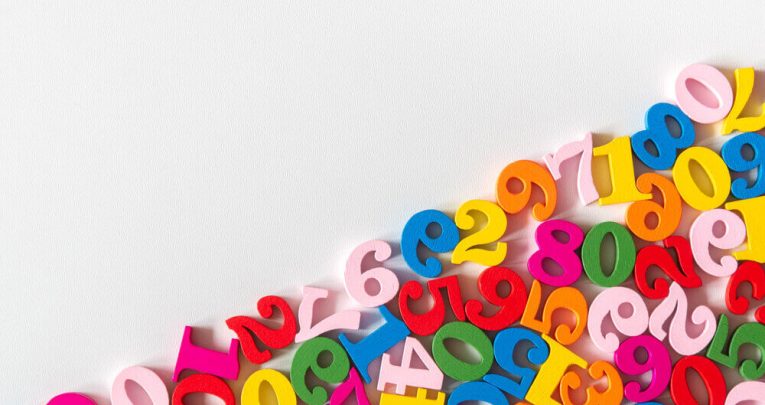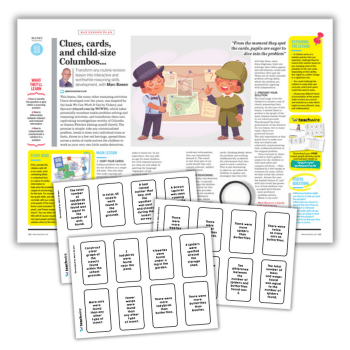Sequence maths – helping children spot patterns

Using question sequencing in maths can help bring out more of those ‘Oh yeah!’ moments, says Gareth Metcalfe…

We all love those ‘Oh yeah!’ moments in a maths classroom when a child’s face lights up as they make a new discovery.
When they notice a pattern and want to explore it further, or when they go off and create their own thought-provoking questions. These moments are precious and uplifting, encapsulating the joy of being a mathematician.
I used to look forward to the end of a sequence of lessons, once children had mastered the basics, when these moments were more likely to happen. Then the rich mathematical learning could really take place!
But what if children could experience more of these moments in day-to-day lessons? Could there be more space for reasoning whilst learning new concepts or practising calculations?
Mathematical reasoning
My eyes were opened to this new possibility by Craig Barton’s brilliant book, Reflect, Expect, Check, Explain, which shows the power of sequences of questions for stimulating mathematical reasoning. As my Pilates teacher says, ‘experience trumps everything.’
So let’s start by answering this little sequence of questions:
A. 1⁄10 of 40 =
B. 1⁄5 of 40 =
C. 2⁄5 of 40 =
D. 4⁄10 of 40 =
Which relationships did you notice?1 Did you anticipate these relationships, or were any of them a surprise?
For example, the answer to question C and question D is 16. Why is the answer the same for both questions? That’s because 2⁄5 and 4⁄10 are equivalent.
But did you notice that before you calculated the answers? I didn’t!
On one level, this sequence of questions allows children to practise the skill of finding fractions of quantities. But there’s also scope for making predictions and explaining relationships.
To deepen, children can have a go at extending the sequence. For example, can they write two other fraction of quantity questions with an answer of 16? It’s not easy!
Find the pattern
I try to show children how to approach these sets of questions. I train them to look for the similarities and differences between the question they are answering and the one before.
I explicitly model the thinking behind making predictions (these predictions do not have to be correct). I show how we can explain the relationships that we find, sometimes using sentence stems to scaffold learning.
Then we explore how sequences can be extended to show our understanding of the mathematical patterns.
Time for another example. Have a go at this sequence:
A. 28 ÷ 7 = ___
B. 28 ÷ 7 = ___ + 1
C. 28 ÷ 7 = ___ ÷ 1
D. 28 ÷ 7 = ___ – 2
E. 28 ÷ 7 = ___ × 2
Once you have completed the sequence, check the answers2 and think about the observations that children might make (or that you can lead them towards).
For example, would children expect the missing number in question B to be less than the missing number in question A? Or can we explain why questions A and C have the same answer?
Then, by creating their own sequences of questions, children can show their understanding in a way that’s unique to them. You might even get some fantastic questions that you can use in your next lesson.
Keep it simple
The key principle in creating a sequence is to limit the number of differences between the questions. If only one thing changes from one question to the next, children can directly see the effect of each change.
This is like running a science experiment, where only one variable is adjusted. In contrast, if lots of things change from one question to the next, children will simply answer each question in isolation.
When I used to teach the order of operations to my Y6 class, I would teach the children the basic rules. For example, rather than carrying out calculations from left to right, we do the bracketed calculations first, then we do the division/multiplication, and finally we carry out the addition/subtraction.
I used to give the children a range of unrelated questions to work through. Now, I use sequences of questions like the one below. The questions, without being harder in themselves, take us a little deeper. Have a go!
A. 20 – 5 × 2 =
B. 20 – (5 × 2) =
C. (20 – 5) × 2 =
D. (5 – 2) × 20 =
E. 5 – 2 × 20 =
Before reading on, make sure you check your answers!3
For simplicity, I use the same numbers and operators for all the questions. Also, I try to minimise the difficulty of the calculations, as I want children’s limited attention to be directed towards spotting those key similarities and differences.
For example, the answers to questions A and B are the same because the brackets in question B do not affect the order of the operations. However, the position of the brackets in question C does change the answer. Why? Because the brackets here tell us to carry out the subtraction first.
I sometimes like to throw in a curveball too. Here, the answer to question E is a negative number. For this sequence, an effective extension task is to ask children to find the largest and the smallest possible answer using the same numbers and symbols. It takes a bit of thinking…4
It’s so exciting when children get used to tackling sequences of questions, especially when you have taught them how to attack the questions skilfully.
There is such a buzz as pupils make connections and explain their thinking. So much reasoning can be drawn out from so few questions! And I can use this technique early on in a series of lessons too, so long as children have the skills to carry out the calculations.
It is an approach that has given me so many great classroom moments. I hope it can be useful for you too!
1Answers: 4, 8, 16, 16 2Answers: 4, 3, 4, 6, 2 3Answers: 10, 10, 30, 60, -35 4Largest: 20 × 5 – 2 Smallest: 2 – (20 × 5)
Find Gareth on Twitter @gareth_metcalfe











